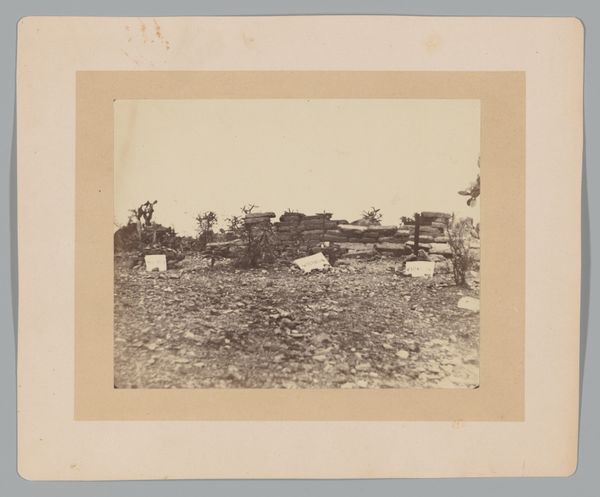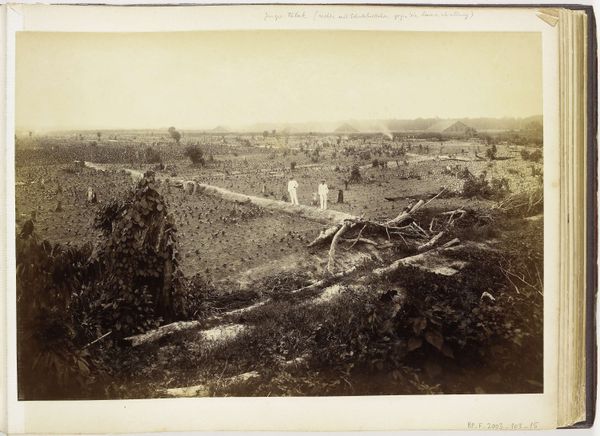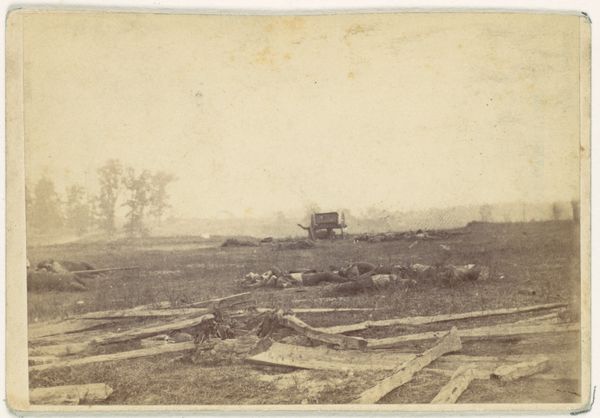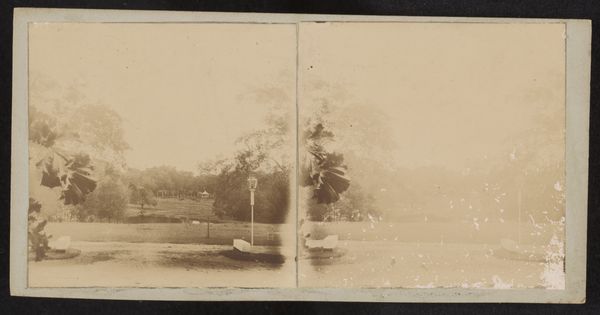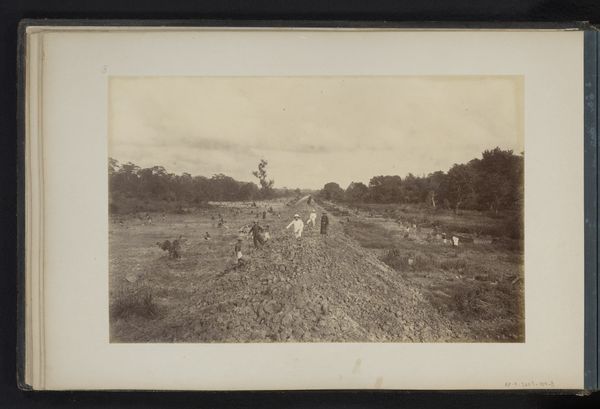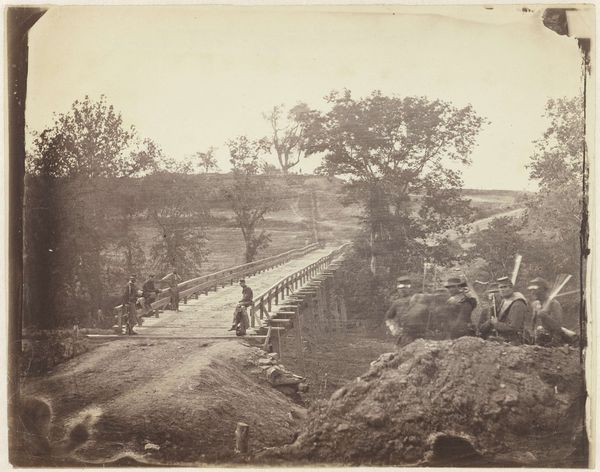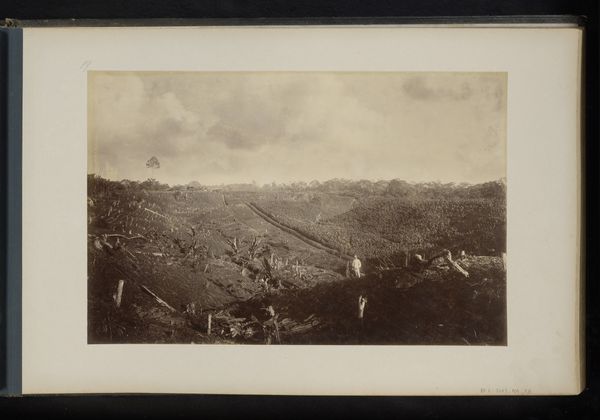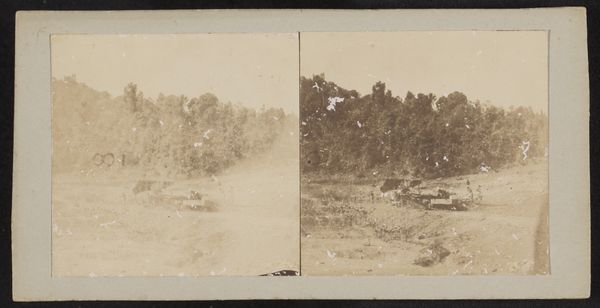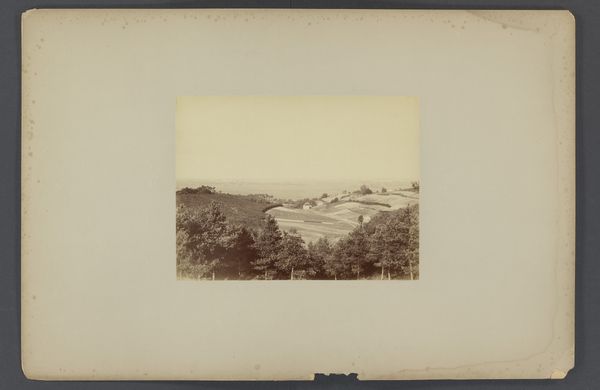![[Antietam Battlefield] by Alexander Gardner](/_next/image?url=https%3A%2F%2Fd2w8kbdekdi1gv.cloudfront.net%2FeyJidWNrZXQiOiAiYXJ0ZXJhLWltYWdlcy1idWNrZXQiLCAia2V5IjogImFydHdvcmtzL2UwNTRiMGQ1LTdkMTItNDJmYS1iMGQ2LWViMTZiOTRiYzViNi9lMDU0YjBkNS03ZDEyLTQyZmEtYjBkNi1lYjE2Yjk0YmM1YjZfZnVsbC5qcGciLCAiZWRpdHMiOiB7InJlc2l6ZSI6IHsid2lkdGgiOiAxOTIwLCAiaGVpZ2h0IjogMTkyMCwgImZpdCI6ICJpbnNpZGUifX19&w=3840&q=75)
photography, gelatin-silver-print
#
natural tone
#
war
#
landscape
#
photography
#
gelatin-silver-print
Dimensions: Image: 9.1 x 11.8cm (3 9/16 x 4 5/8in.) Mount: 4 3/16 in. × 4 15/16 in. (10.7 × 12.6 cm)
Copyright: Public Domain
Editor: This is Alexander Gardner's "[Antietam Battlefield]," a gelatin-silver print from 1862. The hazy landscape, the natural tones... it feels both serene and deeply unsettling. What's your perspective on this piece? Curator: The desaturated palette, combined with the almost documentarian landscape style, compels us to look beyond any artistic idealization of war. Consider the labor involved – the photographers meticulously transporting bulky equipment across battlefields. How does the mechanical process of photography here influence your understanding of the "truth" of the image? Editor: That's interesting... I hadn't thought about the physical labor behind creating the image itself. The “truth” would then be shaped by both what’s in front of the lens and how the photographer manipulates that through his process. Curator: Precisely! Gardner’s images weren’t solely objective records. They were consciously crafted, circulated and consumed as commodities that sought to shock viewers and, by extension, mobilize political sentiment. The choice of printing materials too – gelatin silver – adds a layer; a relatively modern, reproducible medium allowing wider dissemination than earlier photographic processes. Where does that commodification sit with you? Editor: I see what you mean. Thinking of it as a commodity changes things. The image then becomes part of a bigger cycle of war, media, and public consumption... it loses that initial serenity and feels heavier somehow. Curator: Indeed. By examining the means of production, we gain insight into how the artwork itself actively participates in, and comments on, the social and material conditions of its time. It invites us to contemplate the complex relationships between art, labor, and consumption. Editor: I never really thought about the economic and material conditions behind photography before. This has given me so much to consider! Curator: Wonderful! Analyzing the material production brings the realities behind an image, particularly one portraying war, into sharper focus.
Comments
No comments
Be the first to comment and join the conversation on the ultimate creative platform.
